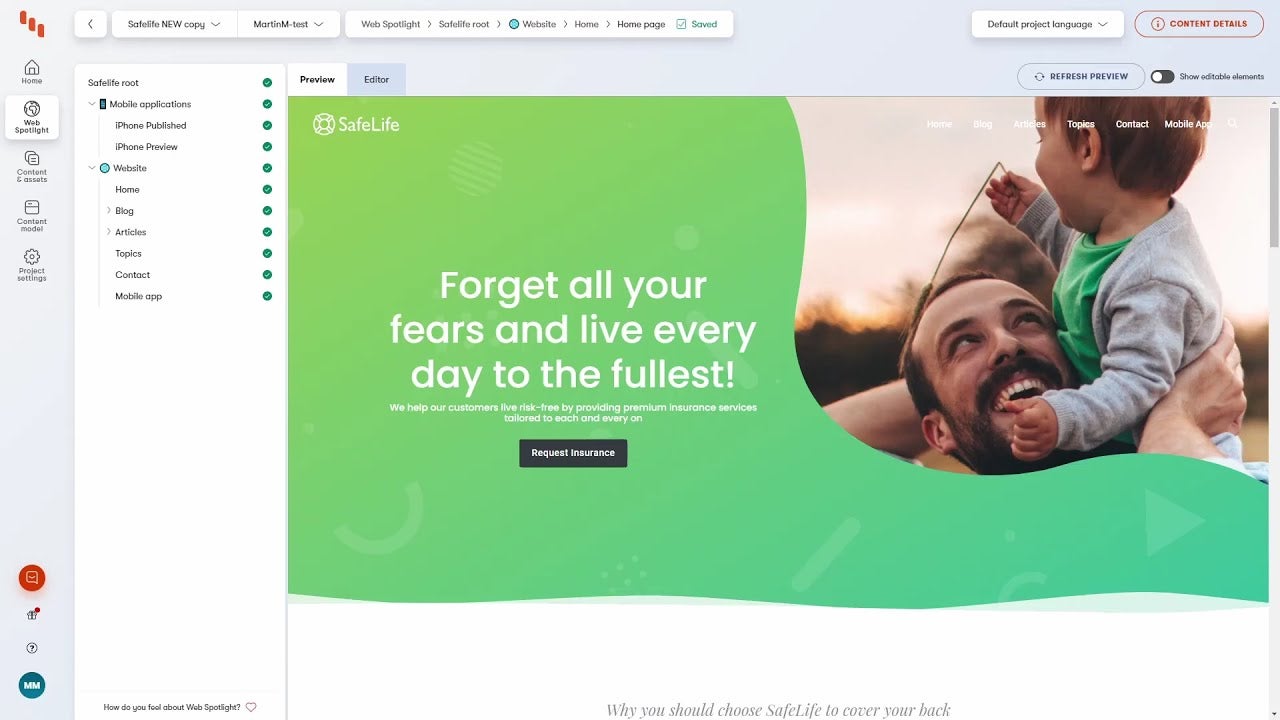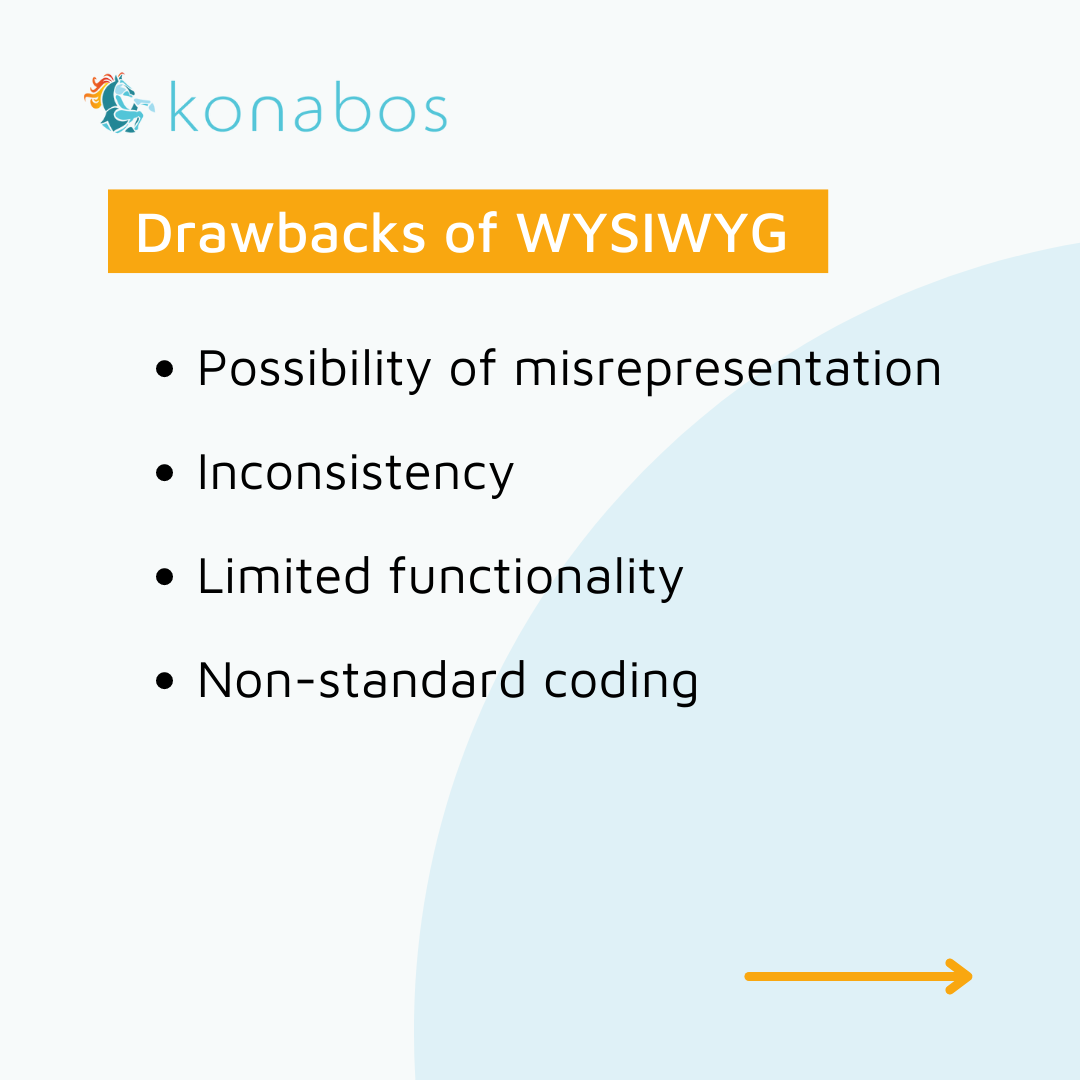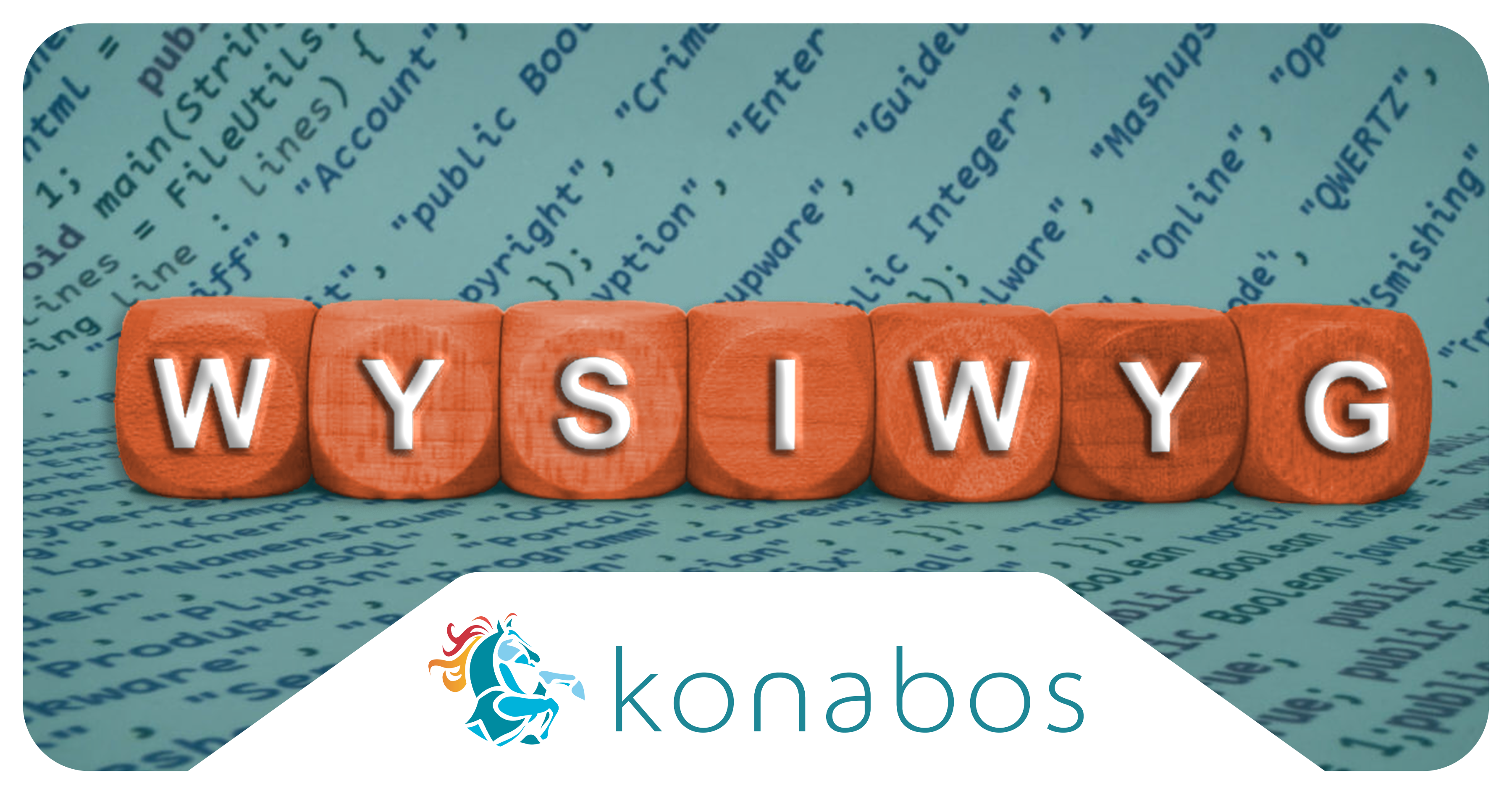What Does WYSIWYG Mean In A Composable DXP?
Morgan Blackett - Marketing Strategist
4 Oct 2022
WYSIWYG and Composability
The prominence of the WYSIWYG (What You See Is What You Get) editor has declined since the move towards a Composable Digital Experience Platform (DXP). Many Headless Content Management Systems (CMS) do not provide a WYSIWYG editor; this is because content management and presentation layers are decoupled in this architecture.
That said, Some Headless CMS providers do provide something reminiscent of WYSIWYG.
Jordon Torpy, Product Marketing Manager at Kontent.ai, offered these comments when we asked him about this “When we’re talking about CMS platforms, WYSIWYG page editors are typically seen in a monolithic CMS, where the CMS is also responsible for the final presentation of content. Headless CMSs often don’t offer a WYSIWYG editor, although some providers have solutions that give similar capabilities, like Web Spotlight in Kontent.ai.”

How Can Marketers Adapt To This?
Change is rarely easy, especially when you have done something a certain way for a long time. As a marketer, a WYSIWYG tool allowed you to confidently preview how your content would appear on the front end of a website. However, as the channels have proliferated beyond just the web experience (“omnichannel”), and with the concomitant decoupling of content management and content delivery, the traditional WYSIWYG has become a lot less central to the operations.
Mark Demeny, Head of Product Strategy at Uniform shared these sentiments, “WYSIWYG has been a double-edged sword - allowing content creators to have more control over formatting and layout has encouraged the democratization of content creation, but often means risking losing brand consistency or being able to reuse content in other channels or contexts."
Demeny goes on to say that he has been advocating for a new term "WYSIWYN," or What you see is what you need – “which means having the tools that content creators need to update, create, manage layouts, etc. but in a way that balances governance and channel needs."
"In a ‘composable’ world, it means being able to edit content (as you would expect) but having more context about how content is related, assembled, and being distributed into channels along with contextual preview"
Deane Barker, Global Director of Content Management at Optimizely, also shared his thoughts. "A while back, there was something called WYSIWYM: ‘What you see is what you mean.’ It only allowed formatting within the bounds of CSS – you were only allowed to specify intention, not execution. This is probably the best way to do it, but it requires a lot of communication and trust between editors and designers."

Steps Towards The Future
In a composable world, the ubiquity of the WYSIWYG has diminished. Your website is no longer the only channel but is seen as one part of an omnichannel approach for an enterprise. Therefore, the primary focus is on data being consistent and relevant across all channels.
To deal with this new shift in technology, marketing and technology leaders need to understand the benefits of composability to their enterprise.
“Headless CMS software often does not include presentation technologies,” asserts John West, Senior Customer Advocate at Konabos.
“Composable CMS vendors cannot provide advanced page control and inline editing experiences without requiring site developers to employ proprietary technologies and software development kits. Decoupled solutions should avoid this kind of custom development for the same reasons that lead to the headless CMS revolution in the first place. Such factors include vendor lock-in, higher development costs, slower time-to-web, and painful, time-consuming changes and site migrations.”
However, a solution to these problems will be here soon, predicts West. Short term, “editing field values in the CMS and saving before previewing the results in the context of the page appears preferable (to the previous alternative).”
“Third-party software development companies in the ‘front-end-as-a-Service' space are appearing in the market and will soon partner with and OEM (original equipment manufacturer) their products to address these gaps for headless CMS vendors.”
There are many implications in the shift towards composability and it is critical to keep a composable mindset at the forefront of your strategy. With this understanding, leaders can guide their teams and enterprises into a future that matches who they want to be while being faithful to their mission and operating principles.




Share on social media